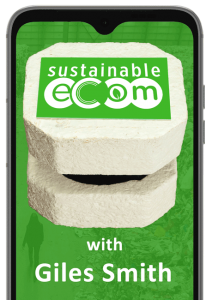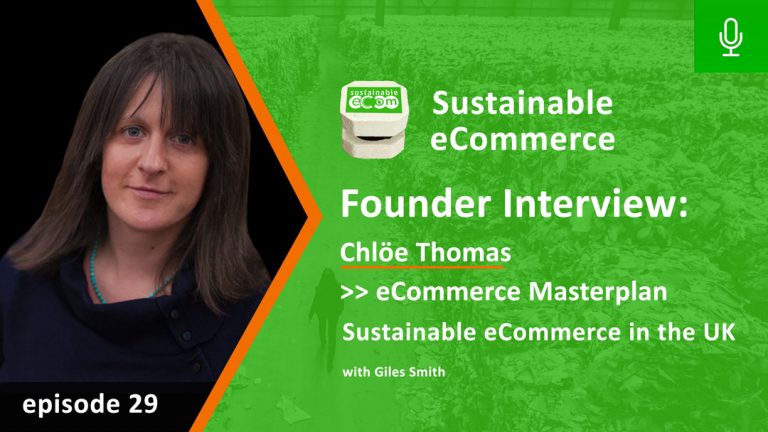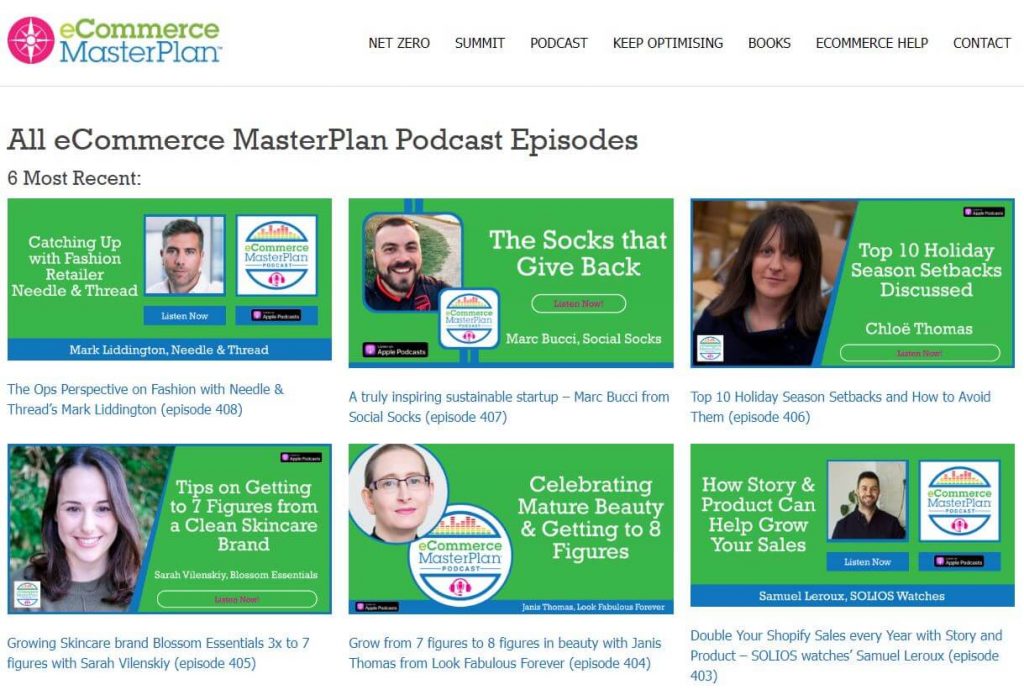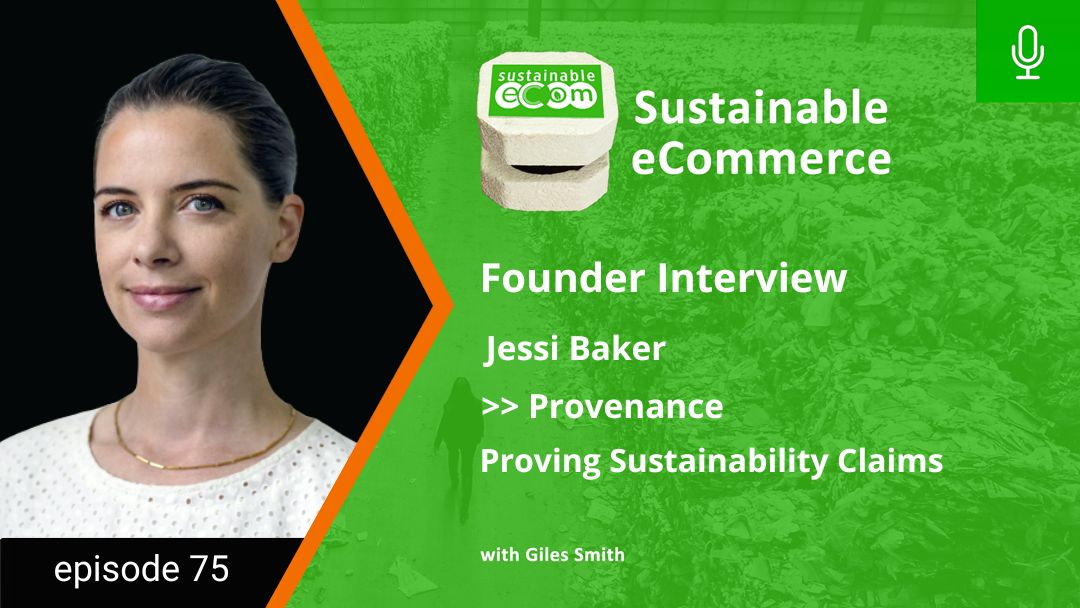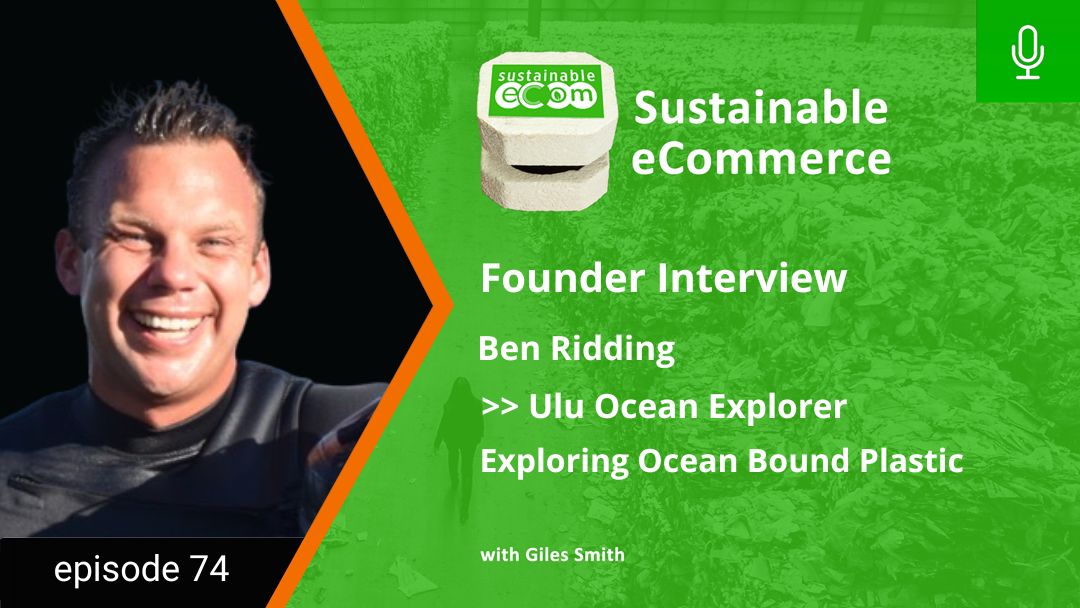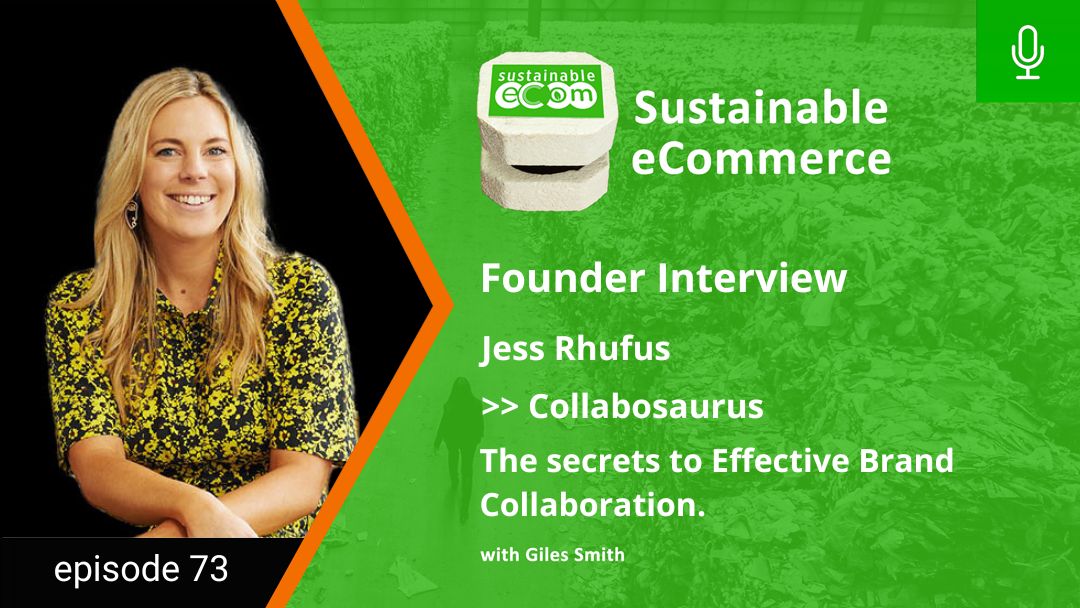Welcome to Epidose 29 of the Sustainable Ecommerce Podcast!
I do love it when I get to introduce you guys to some of the people who have really inspired and influenced me over the years. We had Zoltan Csaki a few weeks ago, and today I’d like to introduce you to someone else who’s been quietly guiding me for years.
Chloë Thomas is a UK-based eCommerce expert & former agency owner who’s been around the game even longer than me! She’s written multiple books on the subject, is regularly asked to be a keynote speaker and hosts not 1 but 2 ecommerce and marketing podcasts, chalking up well over 500 episodes!
In 2022 she’s repositioned her show the eCommerce Masterplan to have an increased focus on Sustainability, which of course make for a very interesting dynamic given her insights into what’s happening in the Northern hemisphere.
Naturally when two podcasts hosts get together we pretty much immediately go off track, but do keep listening to the end because the UK has always been ahead of us in Australia, and what is happening there is often a good yardstick of what’s to come down here.
Giles Smith: Chloë Thomas, welcome to the show!
Chloë Thomas: Thanks so much inviting me on. It's awesome to be chatting with you.
Giles Smith: I thought it would be really interesting today to compare our experiences North & South regards what’s happening in sustainability, because we're on a similar kind of journey in terms of what we're doing with our podcasts. But before we get into all of that can you introduce yourself and the Masterplan Podcast?
Chloë Thomas: Yeah, sure. So I'm Chloë Thomas. I've been in this wonderful world of e-commerce for almost 20 years now. I started out working for a UK High Street retailer running their catalog mailings and their online stuff. So yeah, we were trying to do omnichannel in 2003, which was a lot harder than it is today.
Then I went and became head of eCommerce for a group of mail order businesses, that became a marketing agency that I ran for 10 years, spent five years trying to get rid out of. And my exit strategy was eCommerce Masterplan, which originally was kind of a coaching and consulting idea. And then I discovered podcasting. That's been the last seven years, learning more about podcasting, growing the podcast, and using that medium to help as many businesses as I can.
Giles Smith: So let's get onto what we want to talk about today. I thought it would be really fun to compare notes across the businesses that we work with and, and the businesses we've interviewed as to what's happening in the north and south. Is it the same stuff? Are there different things happening? Are people doing things in different ways? So, what's happening in the marketplace for sustainability up in the Northern Hemisphere up in the UK?
Chloë Thomas: Well, it's a tricky one to answer because there's where I think we should be, and then there's the reality of where we are. We were heading on quite a nice trajectory as we came out of the pandemic. But I find that now in the e-commerce industry rather than the consumer perspective on it all, there's those brands who are all embracing it and who are doing a marvelous job of proving that sustainability does not preclude profitability, which I think is excellent. I think that that’s kinda like a big message we need at the moment is becoming sustainable doesn't, have to cost you more.
I think as eCommerce people in the eCommerce industry, we have a moral responsibility to help consumers change their buying behavior around sustainability. We are, we are a massive part of the problem, and I was hoping that in the, maybe the next 12, 18 months, we'd be at the point where everybody would be trying to be more sustainable. But, I think we're a lot further away from that if we carry on the same trajectory because I think my audience are not as all embracing of sustainability as I want them to be. It's like a side play.
Giles Smith: I want to go a little bit deeper and narrow in the focus a little bit. Is what you’re seeing from brands a reflection of how their customers think and feel?
Chloë Thomas: I think potentially it's that. I think potentially it's also that over here, e-commerce people are pretty tired at the moment. We’ve had the crazy that was 2020, the crazy that was 2021. We're now having the crazy, that's 2022. The big macro stuff that's going on. Pandemic, surges in demand, crashes in demand, no staff anymore. Supply chain issues. Now we've got rising inflation. It feels like every six months there's a whole new world to get used to.
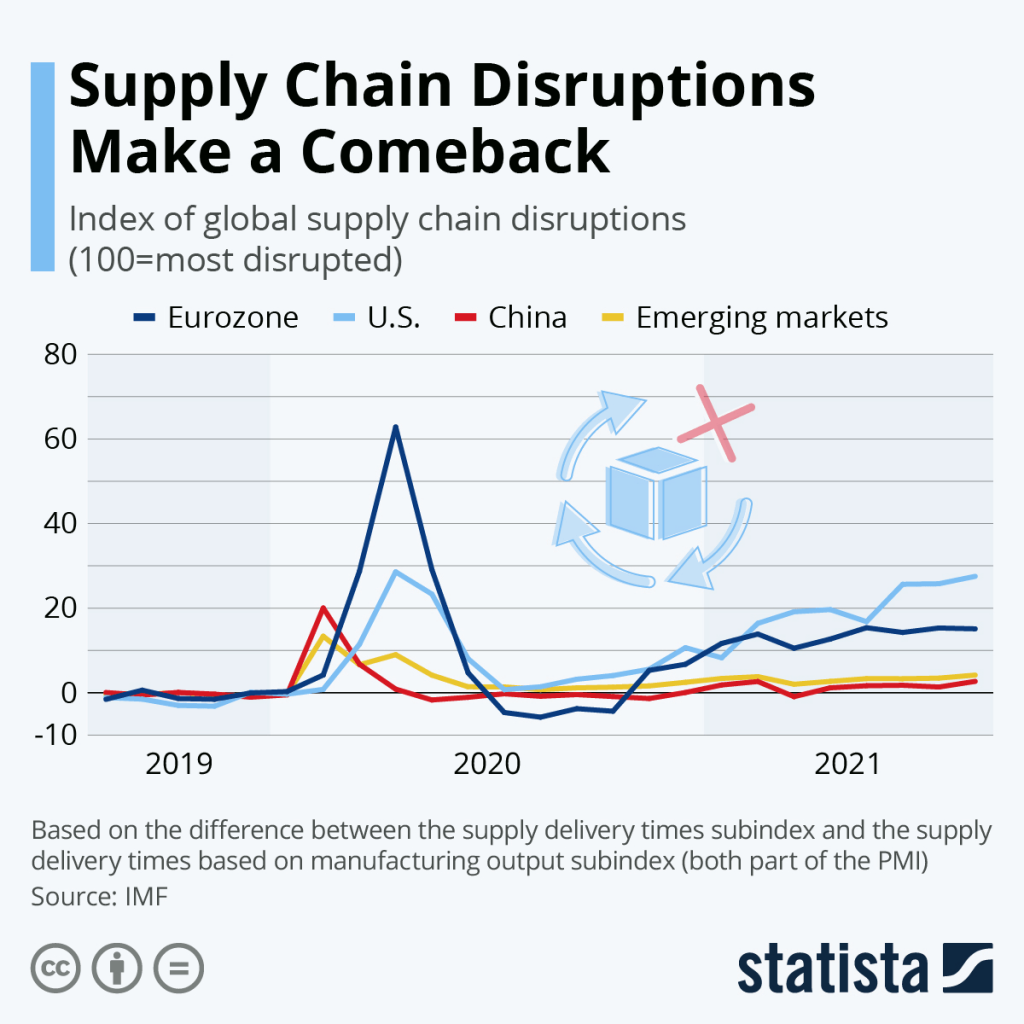
So I think people are just tired trying to deal with the day to day. I think they’re just exhausted, don’t know what to do. I think one of the problems with trying to get e-commerce brands to embrace sustainability is that for most of the time, finding out what to do is relatively easy. But making a brand more sustainable is a confusing nightmare. Even working out how to make a business carbon neutral, which is the easier numbers game, is nye on impossible to find the perfect solution because everything is a caveat, everything is a trade off, everything is a decision.
So it's just so much harder than what we’re used to in e-commerce. You know, we are usually making black and white decisions and all of a sudden we've got a decision that is entirely gray.
So I think that's, that's a big reason why it's not happening is when we get tired and there's so many other things we could be doing, we focus on the ones and zeros, the black and white decisions, not on the gray decisions.
Giles Smith: I think you're exactly right. Sustainability is almost mind-bogglingly confusing & complicated. Two different experts will give you two different opinions. Continual, almost semi-religious debates we seem to get into in the space, make it all that much harder for brand owners to work out what the heck to do next.
Chloë Thomas: It's so, complicated. I've had people on the podcast who have raved about bamboo clothing. I've got others who are telling me bamboo's bad. I've got amazing sustainable brands who are manufacturing ethically in Kenya and then shipping to sell in the US. Is that okay? I don't know any more. The consumer's confused and brands are confused. And as brands, we need to educate the consumers. We've also had a big backlash in the UK about people selling second hand clothing. I mean, maybe it's not ideal that there's clothing you bought and you didn't want, but it's better than buying new, isn't it?
So I think it makes total sense that brands are nervous about talking about what they're doing because they're worried they're gonna get accused of greenwashing or doing something wrong. Or maybe they’ve done 20 million things and then someone calls them out for the fact that maybe their label uses an ink that isn’t very green.
Giles Smith: We’re going to have to solve this problem because it’s clear consumers want to buy from brands that are making an impact in the world.
Chloë Thomas: Some fascinating stats that Klaviyo put out, they found that 89% of people said that sustainability was important to them. Only 27% of people were regularly buying sustainable products. What people say they do and what they actually do are generally different. But that's 50 percentage points of difference. So, I think that that big gap in the middle is down to brands not educating consumers.
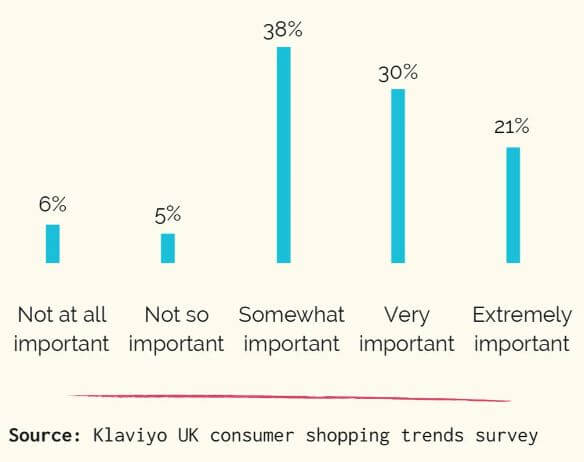
The more brands can educate customers, the faster we will make these changes. But the key is to be transparent. The message which keeps coming through from the brands who are doing the best is transparency, transparency, transparency. Here's what we're doing. This is where we made progress. This is where we're trying to get to. This is where we haven't managed to do it yet. Be it on social, be it on the home page, be it on the about us page, be it in their emails.
And one of the interesting discussions that I'm increasingly bringing up on my own podcast at the moment and when I'm talking to people is, what's the role of the sustainability message in your marketing? Is it the hook that gets you the new customer? Is it the bit that gets you the sale and gets the conversion? Or is it something which you do post-purchase to educate the customer and build the relationship?
Giles Smith: Yes, you're absolutely so right, and, and I think one of the reasons why so many brands would give you one of those three answers at the expense of the others is partly because they probably don't really have any idea who their customer is and what they want.
But the reality is that it actually probably is all three. Just for different types of customers. Whether sustainability is the hook, the conversion factor or the story piece depends on the type of customer.
Chloë Thomas: I think that knowledge of the customer, and the customer's desires and wants, the whole empathy piece is going to be essential for a successful 2022 and even more important for a successful 2023 because we have increased competition and the algorithms are not as strong as they used to be on the targeting front. So, we have to make our creative work on Facebook ads, on Google ads, on TikTok, in our organic social, in our email, on our website. We need the right messaging and. It's something we've been able to ignore for probably the last decade in eCommerce as the land grab has been going on.
The land grab phase is now over. You've now got to work really hard, and if you don't know why your customer chooses your product and why they want to buy from you, you cannot resonate with them.
Giles Smith: What strategies do you think are working best for sustainable brands now?
Chloë Thomas: They know why their customer buys, they know why their product is better. They know what is appealing to them. They've got to grips of where the price point should be. They are creating content and story and building relationships that reflect what the consumer wants to see, and having an understanding of how that is shifting as inflation starts rising and all these other issues are coming into play. One of the brands I spoke to recently was switching all their messaging from focus on things like sustainability and skincare benefits to cost saving. They're a re-usable baby wipes brand.
Partnerships is something which I think the eCommerce world has neglected in its quest for the ultimate Facebook ad, which is partnering with all sorts of different bodies, different things. That will enable a transfer of trust from their audience to your brand because they're the one promoting you.
And this for me comes in multiple different formats. For example, getting your brand into subscription boxes, swap parcel inserts, to swap ads on order confirmation pages, send the emails to each other's customers, promote each other's social posts, et cetera, et cetera. It feels like there's a lot more collaboration in the sustainability space than there is in normal e-commerce.
Giles Smith: I think you’re right about the collaboration thing, and I think that comes down to the fact that we’re all on the same agenda.
Chloë Thomas: Three brands I've interviewed in the last year, who are startups who have already made their platform available to other brands. One who's creating fashion in the UK like doing the full manufacturing process and making that platform available to other brands.
Giles Smith: There's a real need for that, because sustainability is often more expensive that doing things the non-sustainable way.
Chloë Thomas: It sometime can be more expensive, but not always. Like the simple head office stuff, it's basically, it's a lot easier to make your head office net zero than it is to make your production line net zero. Mostly the head office stuff is going to be cheaper. Change the light bulbs, that's cheaper. Change your electricity supplier, probably cheaper. Change your travel policy for your team, cheaper. So increasingly, if you make these changes, it's actually good for the bottom line of the business as well as being better for the planet. And it just starts that mindset shift as you then start to go and tackle the more complex stuff.
Giles Smith: Chlöe thank you so much for chatting with us today, good luck for the next 500 podcasts!
Chloë Thomas: It's been lovely chatting with you, Giles. Thanks for letting me rant about sustainability on a podcast!
Top 3 Takouts
It was so great to get the Northern Hemisphere perspective from someone who also speaks to many different sustainable brands. It was hard to restrict myself to juts 3 – so here’s 4 things that are buzzing around my head as a result of our conversation.
Firstly, the market in the UK and EU has taken a bit of a back step away from sustainability being a central value driver, and currently isn’t the first thing on customer’s wishlist in the same way as perhaps it has been for the past couple of years.
Granted, there’s always a disparity between what people say and what they actually do (especially when it comes to spending their hard earned cash), but when sustainable brands start to revise their whole messaging around cost effectiveness, you can bet a real shift is underway.
Now the question for us down here in Australia is, are we in the same boat? My gut, and what I’m seeing is that that transition is certainly under way, but we are not there yet. The latest inflation print for the June quarter had CPI in Australia pegged at a shade over 6%, which is certainly a significant inflation rate, but when you compare that to UK at approximately 10% and Eurozone already over 11%, we’re thankfully a little behind.
I’m not an economist by any stretch, but my thoughts are to enjoy this coming sales season, but be prepared to take a fresh look at your messaging, and start preparing for margin erosion through 2023. Best case, I’m wrong and you’re left on a solid footing.
Does that mean throw away your sustainability messaging – no 100% not! But it is worth looking at how your products can save the customer money as well as being good for the environment, and amplifying that part of your story. Of course all that pre-supposes that you really do understand your customer!
That leads nicely into my second takeout, which might end up sounding like a well beaten drum, and honestly I make no apology for it. The last decade in eCommerce has been a kind of digital land grab, and the relative ease of spinning up ads in platforms like Facebook as allowed marketers to get away without truly knowing their customers. Agencies in particular have often got very lazy, relying on deals to drive sales.
But heading into to 2023, if you don’t really knowing your customer, know why they buy your products, how and why they use them, what their pain points are and what their pressure are I can practically guarantee your growth is going to face very significant headwinds next year.
If you’re running a sustainable brand, feel free to download our Conscious Choice Avatar Worksheet, and if you’re not sure, arrange a call we me to see if we can help you.
Honestly this is so important that if you’re not sure who your core customer is, or if you understand it may have changed and you’re not sure exactly what’s missing yet, I would not start budgeting your marketing until you’ve figure that out.
And talking of budgeting and costs, Chloe made a super valid point about how sustainability doesn’t have to cost you more. I myself often get caught up in supply chain and cost of sustainable materials, but Chloe brought a much needed reality check that sustainability also includes stuff like energy provider, type of light fittings, banks, where’s you’re hosting, mobile phone providers and a great many other choices you can make that will by and large end up being both cheaper and better for the environment.
Lastly, Chloe mentioned that one of the key strategies she’s seen being leveraged really well by sustainable brands is partnerships. Now sometimes when something seems obvious to you, you don’t realise how unusual that is, but I agree with Chloe that the world of sustainable brands is way more collaborative than other business arenas. We’re all on the same mission after all.
If your brand is just getting started out, working with a more established brand is a great way to expand your influence quickly, and assuming you pick carefully, could be a lot more cost effective than running TOF ads. If you’re on the flip side, who can you partner with to significantly widen your net? With choppy waters ahead economically, having a few good partnerships under way is a great way to stabilize uncertainty in your digital funnels.
So I hope you enjoyed today’s chat with Chloe, an absolute legend in eCommerce podcasting. I’m still feeling humbled and immensely grateful that she took the time to chat with me! I’ll be back with you again next week with another inspiring founder interview from the world of sustainable ecommerce, so until then, keep building your brand for a healthier planet!





